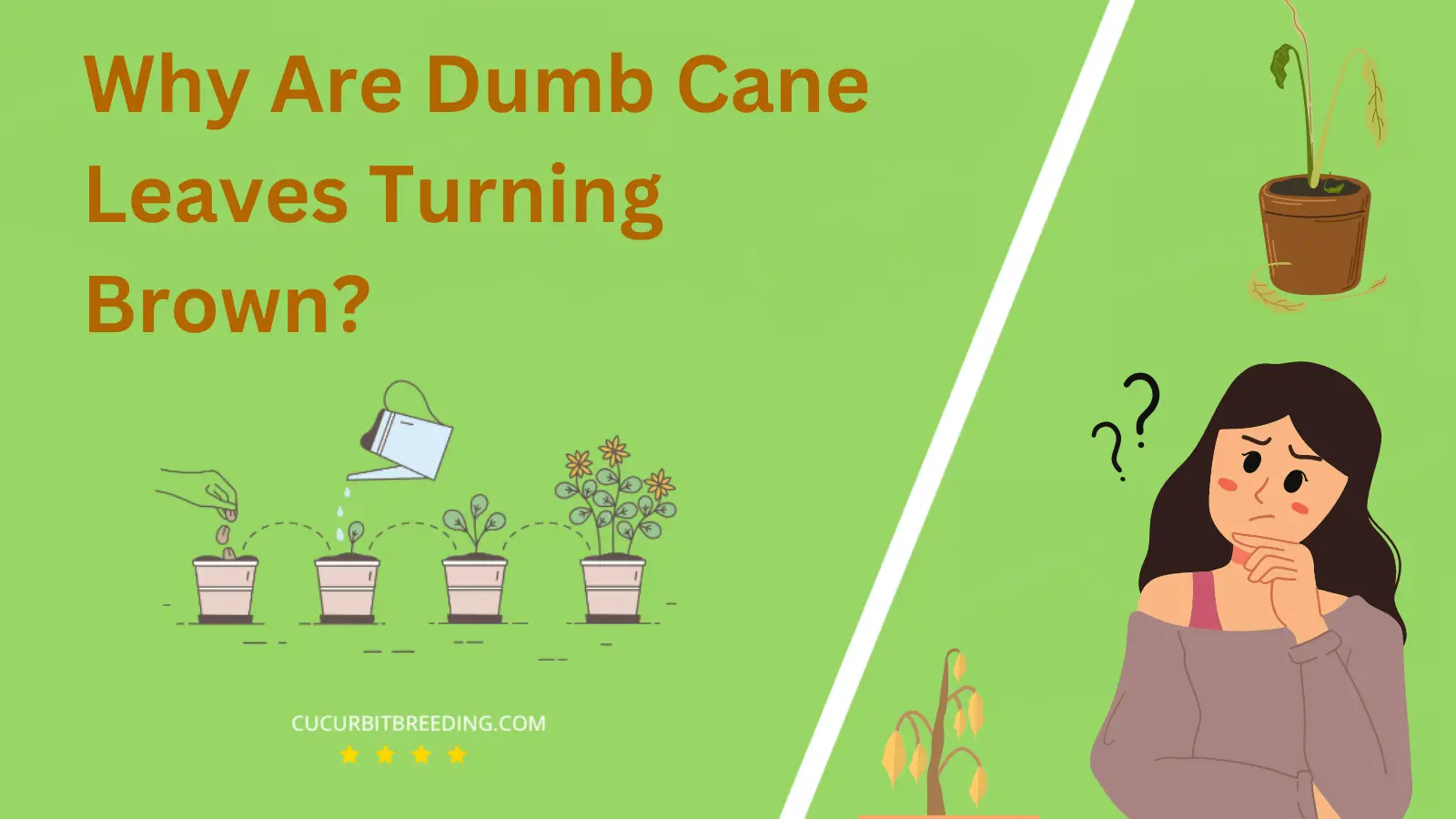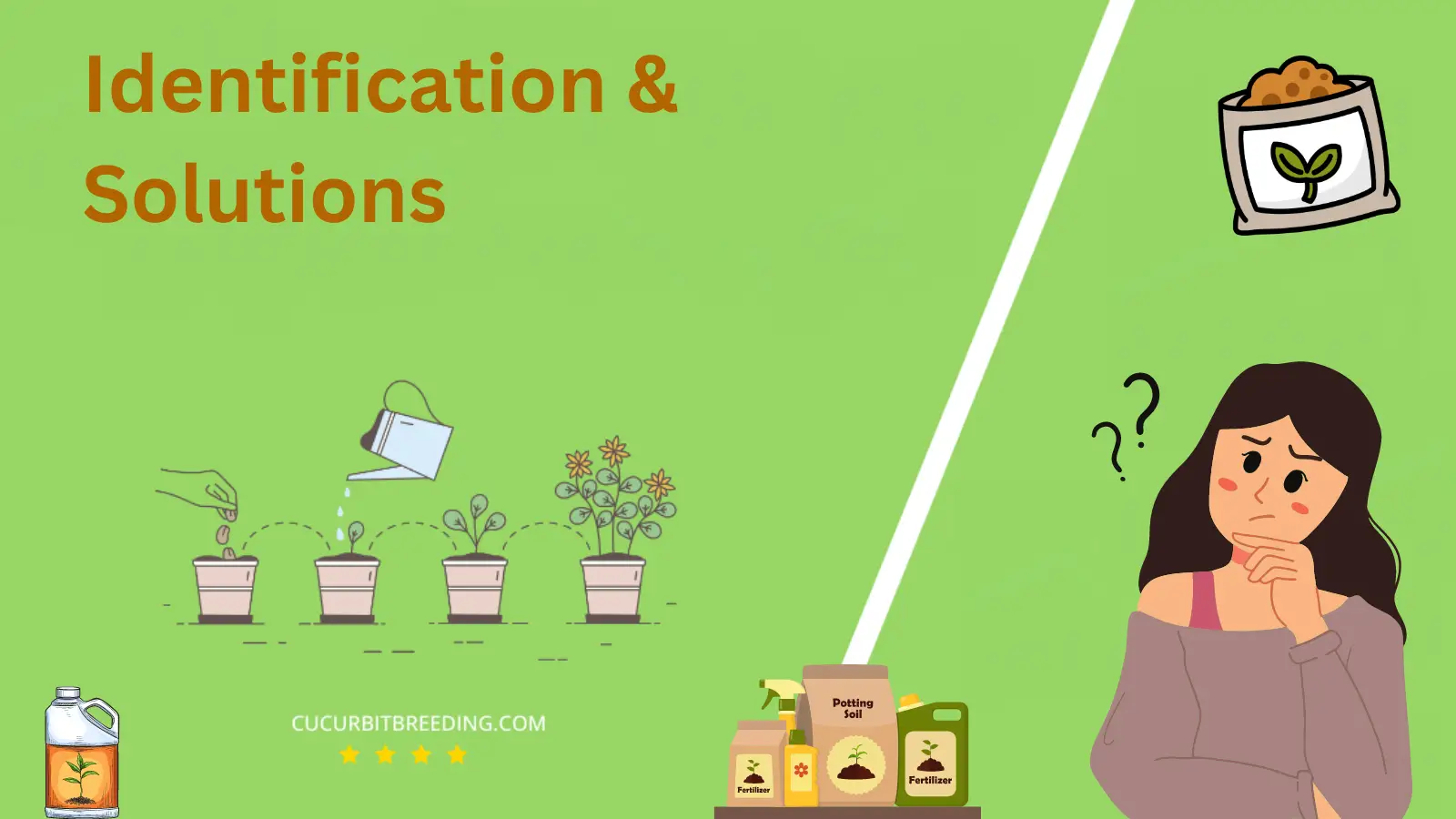
There you are, an enthusiastic green thumb, observing your flourishing indoor garden; when you notice something alarming: the dumb cane leaves are turning brown. Suddenly, the grandeur of your indoor jungle seems threatened. Was it something you did or perhaps something you didn’t do?
Know that you are not alone in this crisis, and solutions exist. This mysterious yet common issue among gardeners is more than just a pigment change – it could be the silent cry for help from your precious plant. Intrigued? Read on!
Why Are Dumb Cane Leaves Turning Brown?
Dumb Cane leaves may turn brown for several reasons. Underwatering or overwatering can cause stress and browning. Also, inadequate humidity can lead to brown patches. Incorrect temperatures such as too warm or too cold also contribute. Lastly, the plant could have a disease or pest infestation leading to browning leaves. Proper care and balance in all these aspects are integral to the health of your Dumb Cane. For a thorough understanding and solutions, delve deeper into these factors.
1. Overwatering
| Description | Excessive water intake disrupts root functioning, limiting nutrient absorption and causing leaf browning. |
|---|---|
| Solution | Provide consistent moisture levels by watering regularly and ensuring proper humidity levels in the environment. |
Overwatering can cause the leaves of a Dumb Cane plant to turn brown. When the plant receives excessive amounts of water, the roots become waterlogged, leading to root rot. This inhibits the roots’ ability to absorb nutrients and oxygen properly, resulting in browning leaves. To address this issue, it is essential to adjust the watering frequency and amount. Allow the top inch of soil to dry out before watering again, ensuring adequate drainage.
Additionally, consider repotting the plant in a well-draining soil mixture. Trimming off the brown and damaged leaves can help redirect the plant’s energy towards healthy growth. Lastly, ensure that the Dumb Cane plant is placed in an area with sufficient light and proper temperature to promote overall plant health.
2. Underwatering
| Description | Lack of water causes the leaf cells to dry out, leading to browning in dumb cane leaves. |
|---|---|
| Solution | Increase watering frequency to ensure proper moisture levels for the plant’s optimal growth and leaf health. |
The reason why dumb cane leaves turn brown is underwatering. When a dumb cane plant does not receive enough water, it can lead to dehydration and stress, causing the leaves to turn brown. Insufficient water supply can hinder the plant’s ability to carry out essential processes like photosynthesis, which leads to discoloration and eventual browning of the leaves.
To address this issue, it is crucial to ensure proper watering practices for the dumb cane plant. The solution is to water the plant thoroughly whenever the top inch of soil feels dry to the touch. It is important to provide enough water to penetrate the root zone adequately. However, avoid overwatering as it can also lead to leaf discoloration. Additionally, maintaining a consistent watering schedule and ensuring proper drainage can contribute to preventing underwatering and the browning of dumb cane leaves.
3. Lack of sunlight
| Description | Insufficient sunlight causes the dumb cane leaves to turn brown due to reduced photosynthesis. |
|---|---|
| Solution | Increase exposure to sunlight by moving the plant closer to a window or providing artificial light. |
The lack of sunlight is causing the dumb cane leaves to turn brown. Sunlight is essential for the process of photosynthesis, which is how plants produce energy and nutrients. Without sufficient sunlight, the plant’s ability to convert light into energy is compromised, leading to browning of the leaves.
To address this issue, it is important to provide the dumb cane plant with adequate sunlight. Ideally, it should be placed in a location where it can receive bright, indirect sunlight for several hours each day. If natural sunlight is limited, using artificial grow lights can be an effective solution.
Additionally, rotating the plant periodically can ensure that all parts receive equal exposure to sunlight.
4. Nutrient deficiency
| Description | Insufficient sunlight causes the dumb cane leaves to turn brown due to reduced photosynthesis. |
|---|---|
| Solution | Increase exposure to sunlight by moving the plant closer to a window or providing artificial light. |
Nutrient deficiency can cause dumb cane leaves to turn brown. When a plant lacks essential nutrients, it struggles to carry out vital processes such as photosynthesis, which leads to browning of the leaves. This issue can occur due to insufficient or imbalanced levels of nutrients like nitrogen, potassium, or magnesium in the soil.
To address this problem, it is important to identify the specific nutrient that the dumb cane plant lacks. Conducting a soil test can help determine the nutrient deficiencies present in the soil. Once the deficiency is identified, appropriate fertilizers or soil amendments can be applied to replenish the lacking nutrients. For example, adding a nitrogen-rich fertilizer can help if nitrogen deficiency is the cause of browning leaves. It is crucial to follow the instructions on the fertilizer package and avoid over-fertilizing, as this can lead to other problems. Regularly monitoring the plant’s nutrient levels and providing adequate fertilization can help prevent further browning of the leaves and promote healthy growth.

5. Pest infestation
| Description | Increase exposure to sunlight by moving the plant closer to a window or providing artificial light. |
|---|---|
| Solution | Apply organic insecticidal soap to affected leaves to eliminate pests causing brown discoloration. |
The reason for dumb cane leaves turning brown is typically due to pest infestation. When pests such as spider mites or mealybugs attack the plant, they feed on the sap of the leaves, causing damage and discoloration. This can lead to the browning of the leaves.
To address this issue, it is important to regularly inspect the plant for any signs of pests. If an infestation is detected, one solution is to gently wash the leaves with a mixture of mild soap and water to remove the pests. Additionally, introducing natural predators of these pests, such as ladybugs or predatory mites, can help control their population.
Regularly cleaning the plant, providing proper ventilation, and avoiding overwatering can also prevent pest infestations and keep the dumb cane leaves healthy and green.
6. Temperature stress
| Description | High temperatures cause cellular damage, leading to the production of brown pigments in the leaf. |
|---|---|
| Solution | Provide consistent temperature between 60-75°F to prevent brown leaves on the Dumb Cane plant. |
Temperature stress can cause the leaves of a Dumb Cane plant to turn brown. When exposed to extreme temperatures, either too hot or too cold, the leaves of the plant can become damaged and show signs of browning.
This can happen if the plant is placed near a drafty window, in direct sunlight for extended periods, or in a location with inconsistent temperature fluctuations. To address this issue, it is important to provide the Dumb Cane plant with a stable and suitable temperature environment.
Avoid placing it near air vents, drafts, or areas with extreme temperature changes. Additionally, ensure that the plant is not exposed to direct sunlight for long durations, as this can also lead to leaf browning.
Maintaining a consistent temperature range within the recommended range for Dumb Cane plants will help prevent further browning and promote healthier foliage.
7. Disease or fungal infection
| Description | causes a disruption in chlorophyll production, leading to browning of dumb cane leaves. |
|---|---|
| Solution | Apply fungicide to affected areas and increase air circulation to prevent further spread of infection. |
When dumb cane leaves turn brown, it is often a result of disease or fungal infection. This can negatively impact the overall health of the plant and hinder its growth. To address this issue, it is important to first identify the specific disease or fungal infection affecting the plant.
This can be done by observing any accompanying symptoms, such as spots or discoloration on the leaves, and consulting with a plant expert or horticulturist if necessary. Once the problem is identified, appropriate treatments can be applied. These may include using fungicides or pesticides specifically designed to combat the identified disease or infection.
Additionally, it is crucial to ensure proper plant care practices, such as avoiding overwatering and providing adequate sunlight and ventilation, as these can help prevent the occurrence and spread of diseases and fungal infections. Regularly inspecting the plant for any signs of disease or infection and promptly addressing them can help maintain the health and vitality of dumb cane plants.